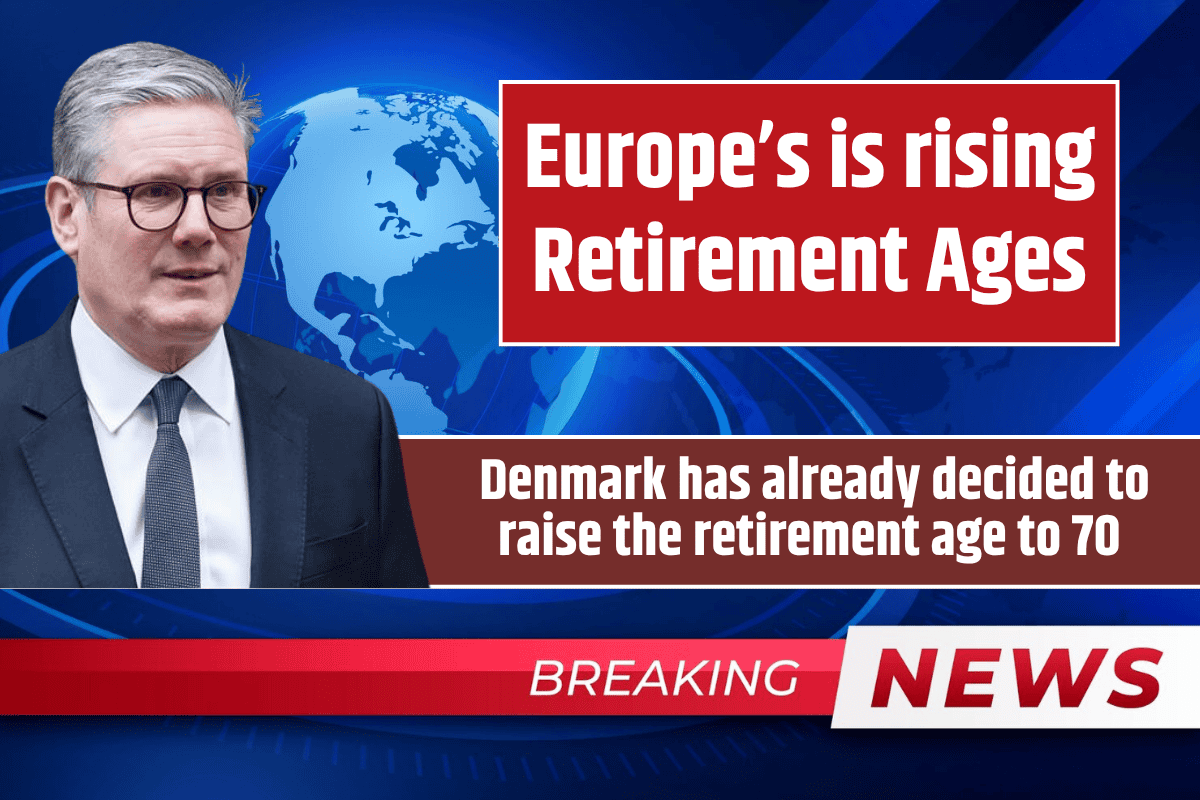With life expectancy and time spent in retirement rising across Europe, governments are making big changes to pension policies. One major step many countries are taking is to raise the retirement age. Denmark is already leading the way, with plans to increase retirement age to 70 by 2040, and even 74 by 2060.
But how does retirement age vary across Europe today? What will it look like in the future? And is there still a gender gap in retirement age? Let’s take a closer look.
Current Retirement Age in Europe
As of 2022, the legal retirement age in European Union (EU) countries varies. For men, it ranges from 62 to 67 years, and for women, it ranges from 60 to 67.
One clear exception is Turkey, where men retire at 52 and women at just 49—much lower than the EU average.
The average retirement age in the EU is:
64.7 years for men
63.8 years for women
Countries With the Highest Retirement Age
Some countries already have higher retirement ages. These include:
Denmark, Norway, and Iceland: 67 for both men and women
Netherlands: 66.6
UK and Ireland: 66
Germany: 65.8
Portugal: 65.6
Countries like Austria, Belgium, Italy, Spain, and Poland have retirement ages set around 65.
Among the major economies, France has the lowest retirement age at 64.8, though this varies slightly depending on the year of birth.
Lowest Retirement Ages in Europe
Besides Turkey, some other countries have relatively low retirement ages:
Greece, Slovenia, Luxembourg: 62 for both genders
Austria and Poland: Women retire at 60
Gender Gap in Retirement Age
In 23 European countries, men and women retire at the same age. But in 9 countries, men retire later than women. The biggest gender gaps are:
Austria and Poland: 5-year difference
Romania, Hungary, Turkey: 3 or more years
On average across the EU, men retire 0.9 years later than women.
Future Retirement Ages by 2060
According to the OECD’s Pensions at a Glance report, most European countries are planning to raise the retirement age further, especially for future generations.
For people entering the workforce in 2022, retirement ages by 2060 are expected to be:
Men: Between 62 and 74
Women: Between 60 and 74
The EU average retirement age is expected to rise to:
66.7 for men
66.4 for women
Countries with the Highest Future Retirement Ages
Here are the countries expected to have the highest retirement ages by 2060:
Denmark: 74 for both men and women
Italy and Estonia: 71
Netherlands, Sweden, Cyprus: 70
Where Will Retirement Ages Stay Low?
Even in 2060, some countries will still have lower retirement ages:
Slovenia and Luxembourg: 62 for men
Poland: 60 for women
In some places, the retirement age will remain different for men and women. Countries like Poland, Hungary, Romania, and Turkey are expected to maintain a gender gap even in the future.
Countries with the Biggest Retirement Age Increases
The biggest changes in retirement age between 2022 and 2060 will happen in:
Turkey: +13 years for men, +14 years for women
Denmark: +7 years for both
Estonia, Slovakia, Italy, Sweden, Cyprus: +5 years or more
These increases are linked to longer life expectancy and the need to keep pension systems financially stable.
How Much Do European Pensions Pay?
In the EU, pensions usually replace about 60% of a person’s late-career earnings. But in many countries, this number drops below 50%, which can make it harder for retired people to maintain their standard of living.
Retirement age in Europe is gradually rising, driven by longer lifespans and increasing time spent in retirement. While most countries are planning for higher retirement ages by 2060, the actual age will vary depending on where you live. Denmark is set to have the highest retirement age at 74, while places like Poland and Slovenia may keep it lower.
The gender gap is slowly closing, and pensions may not always be enough to cover living costs in later life. Future workers need to plan ahead, as retiring comfortably may depend more on personal savings and long-term planning than ever before.
FAQs
What is the average retirement age in the EU?
As of 2022, the average retirement age in the EU is 64.7 years for men and 63.8 years for women.
Which European country will have the highest retirement age by 2060?
Denmark is expected to have the highest retirement age at 74 for both men and women by 2060.
Is there still a gender gap in retirement age in Europe?
Yes, in 9 countries men retire later than women. The gap is highest in Austria and Poland, at 5 years.
Which countries will raise retirement age the most?
Turkey will raise it the most, with an increase of 13 years for men and 14 years for women between 2022 and 2060.
How much do pensions usually pay in the EU?
On average, pensions replace around 60% of a person’s late-career earnings. In some countries, this rate is lower than 50%.

The pension in Denmark is £1,679 pounds a month